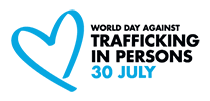Training workshop on Buprenorphine Maintenance Therapy in Prisons
 |
The Iranian National Center for Addiction Studies (INCAS), with the support of UNODC Office in Iran and Islamic Republic of Iran Drug Control Headquarters, held a training workshop for medical staff of Iranian prisons on 26-28 October 2021, on buprenorphine maintenance therapy with a special emphasis on women in closed settings. The training was conducted virtually in view of the precautions related to the COVID-19 pandemic.
Maintenance therapy with Methadone has been used in Iran for many years for treating people with substance abuse disorders, whereas the use of buprenorphine in Iran is more recent and as studies show, it can have fewer complications than methadone for women. With estimated 2.8 million people with drug use problems, Iran has one of the highest opiate use prevalence worldwide. The statistics show that half of prisoners are addicted to drugs, and addiction is one of the most important reasons for imprisonment (62% incarcerated due to drug related crimes). The prevalent drug use disorders treatment and harm reduction used in closed settings is methadone maintenance therapy. Given the proved benefits of buprenorphine substitution therapy due to its reduced toxicity, better retention in treatment, and potential for reducing HIV among people with opioid use disorders, the option of buprenorphine maintenance therapy besides methadone maintenance has been considered for Iranian prisons, especially for women even though being more costly than methadone. Therefore, the Government of the Islamic Republic of Iran has taken necessary measures to make buprenorphine therapy available in Iran.
Subjects covered during this training workshop were, inter alia, the health consequences of opiate use disorder in Iranian prisons; evidence-based treatments for opiate use disorder generally and specifically in a prison context; the pharmacology and drug interactions of buprenorphine; the evaluation and selection of patients with opiate use disorder for buprenorphine therapy; various aspects of the protocol for providing buprenorphine therapy in prisons; special considerations for the provision of buprenorphine therapy in prisons and to women; the management of drug overdoses; psychosocial interventions, continuous monitoring, and urinalyses; buprenorphine in the context of HIV, tuberculosis, and hepatitis treatment and care; and registration, reporting, and supervising of buprenorphine treatment.
This training was the first of two trainings on the topic of the provision of buprenorphine therapy in prisons with a special emphasis on women. Both training workshops have been designed to offer up-to-date practical information to medical personnel on the protocol and the utility of this form of opiate use disorder treatment.
At the end of the training, participants completed a post-test to assess what they learned. The strong positive feedback that was given by the participants of the training underscored the importance of increasing knowledge among Iranian medical professionals about this form of treatment. Implementation of both trainings have been made possible through generous funding from the Kingdom of Norway.
****
For further information please contact:
Gelareh Mostashari (Ms.)
Senior Expert, Drug Demand Reduction
United Nations Office on Drugs and Crime
Islamic Republic of Iran
Email: gelareh.mostashari@un.org


